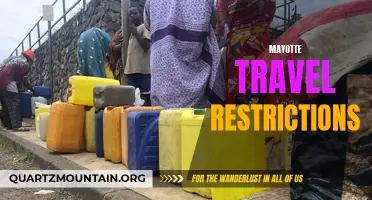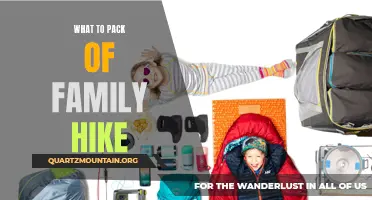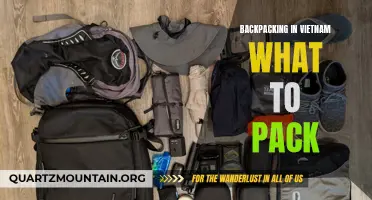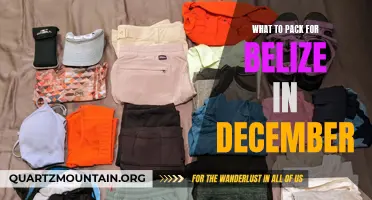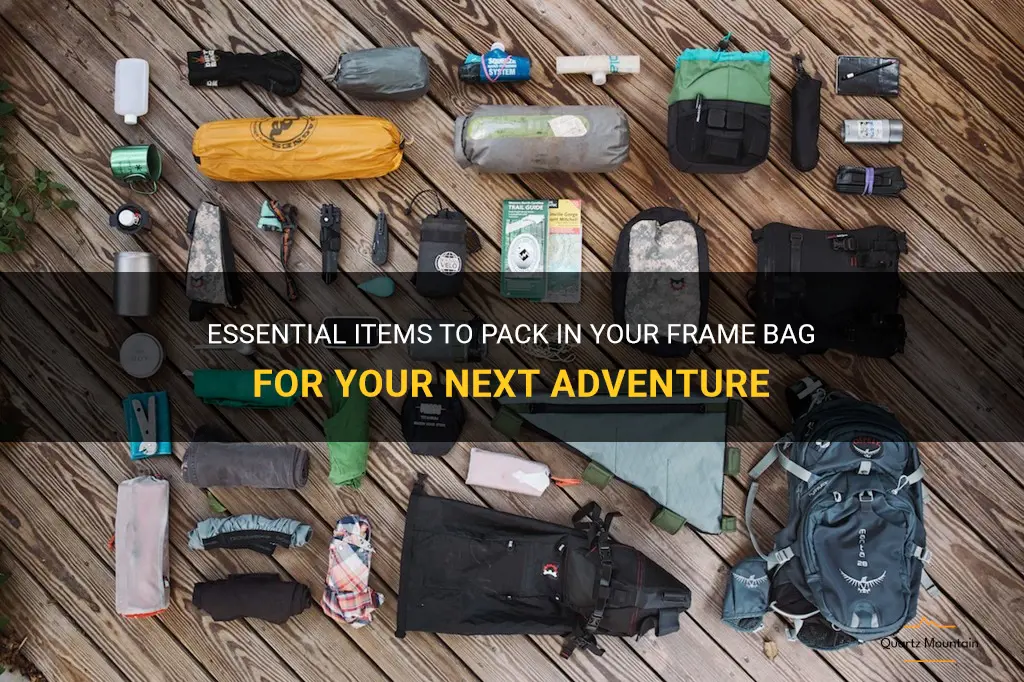
Are you an avid adventurer who loves to hit the road or the trails? If so, then you probably understand the importance of being prepared for whatever comes your way. One essential item that every adventurer should have is a frame bag. These handy bags attach to your bike frame and provide a convenient storage solution for all your necessary items. But what exactly should you pack in your frame bag for your next adventure? Read on to discover some essential items that will ensure you're ready for anything on your next outdoor excursion.
| Characteristics | Values |
|---|---|
| Size | Small to medium |
| Shape | Rectangular or triangular |
| Material | Durable and water-resistant |
| Compartments | Multiple and partitioned |
| Closure | Zipper or roll-top |
| Attachment | Velcro or buckle straps |
| Accessibility | Easy to open and close while riding |
| Weight | Lightweight |
| Waterproofing | Optional but recommended |
| Reflective elements | Highly visible or reflective strips |
| Organization | Pockets or mesh panels for easy organization |
| Durability | Able to withstand rough conditions |
| Capacity | Able to hold essential items such as tools, spare tubes, snacks, and a small pump |
| Stability | Stays securely attached to the bike frame |
What You'll Learn
- What are some essential items to pack in a frame bag for a bikepacking trip?
- Are there any specific items that are important to pack in a frame bag for long-distance cycling journeys?
- How do I determine the optimal weight distribution when packing my frame bag?
- Are there any items that should be avoided when packing a frame bag?
- Are there any tips or recommendations for organizing and packing a frame bag efficiently?

What are some essential items to pack in a frame bag for a bikepacking trip?
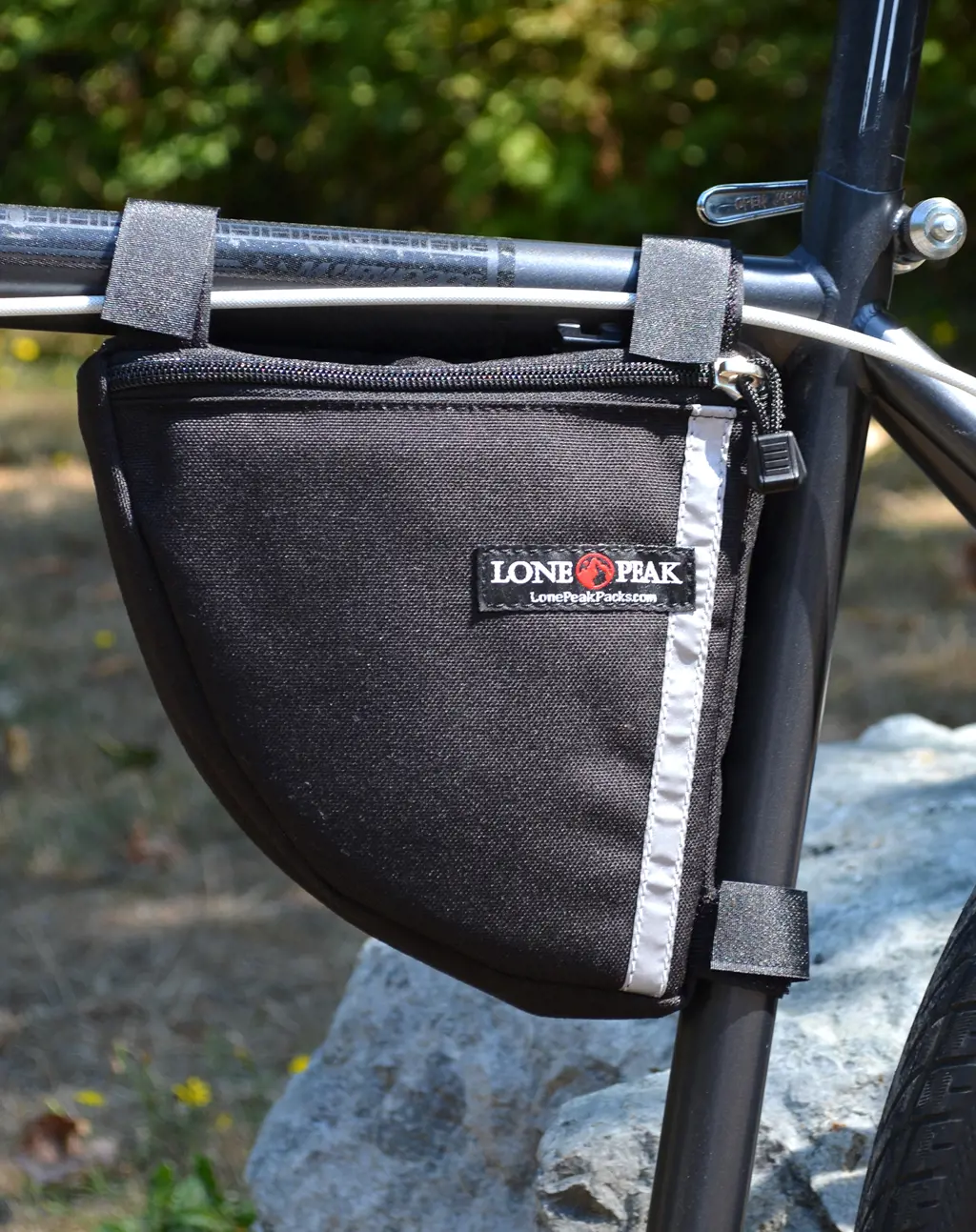
When embarking on a bikepacking trip, it's essential to pack wisely to ensure you have everything you need for a successful and comfortable adventure. One of the most important areas to focus on is your frame bag, as it provides easy access to crucial items without affecting your bike's handling. Here are some essential items to pack in a frame bag for a bikepacking trip.
- Tool Kit: A small tool kit is a must-have for any bikepacking trip. It should include items such as a multi-tool with various wrenches and Allen keys, tire levers, a patch kit, and a small pump or CO2 inflator. These tools will help you handle basic repairs and maintenance on the go.
- Spare Tubes and Tire Sealant: Flat tires are a common occurrence during bikepacking trips, so it's always a good idea to carry spare tubes and tire sealant. Make sure to pack tubes suitable for your tire size and consider investing in tubeless tires and sealant for added puncture protection.
- Hydration and Nutrition: Staying adequately hydrated and fueled is crucial during a bikepacking trip. Pack a water bladder or bottles in your frame bag, along with some energy gels, bars, or other snacks to keep you going. Consider packing a water filter or purification tablets if you'll be relying on natural water sources.
- Small First Aid Kit: Accidents can happen, so having a small first aid kit is essential. Pack items like adhesive bandages, antiseptic wipes, pain relievers, and any personal medications or prescriptions you may need.
- Navigation Tools: Depending on your preferred method of navigation, pack a compass, map, or GPS device in your frame bag. Make sure to have a backup power source or spare batteries for your electronic devices.
- Rain Gear: Weather can be unpredictable, especially during a bikepacking trip. Pack a lightweight rain jacket, rain pants, and a waterproof cover for your frame bag to keep your gear dry in case of rain.
- Clothing Layers: It's essential to pack versatile clothing layers for different weather conditions. Include base layers, a mid-layer for warmth, a lightweight jacket or vest, and arm and leg warmers. Don't forget a beanie or buff for your head and a pair of gloves.
- Personal Items: Pack personal hygiene items such as a toothbrush, toothpaste, sunscreen, and hand sanitizer. If you're camping, consider packing a lightweight sleeping bag, sleeping pad, and a small stove for cooking meals.
- Bike Lights: If you plan to ride during the early morning, evening, or night, make sure to pack bike lights for visibility and safety. Consider carrying both a front and rear light, along with spare batteries or a charging cable.
- Emergency Items: Lastly, include essential emergency items in your frame bag. These may include a whistle for signaling, a small fire starter kit, a lightweight emergency blanket, and a small multitool with pliers and a knife.
Remember, every bikepacking trip is unique, so adjust your packing list based on the duration, terrain, and personal preferences. Practice packing and organizing your frame bag before your trip to ensure everything fits snugly and securely. Happy bikepacking!
Essential Items to Pack for Day Care: A Complete Checklist
You may want to see also

Are there any specific items that are important to pack in a frame bag for long-distance cycling journeys?
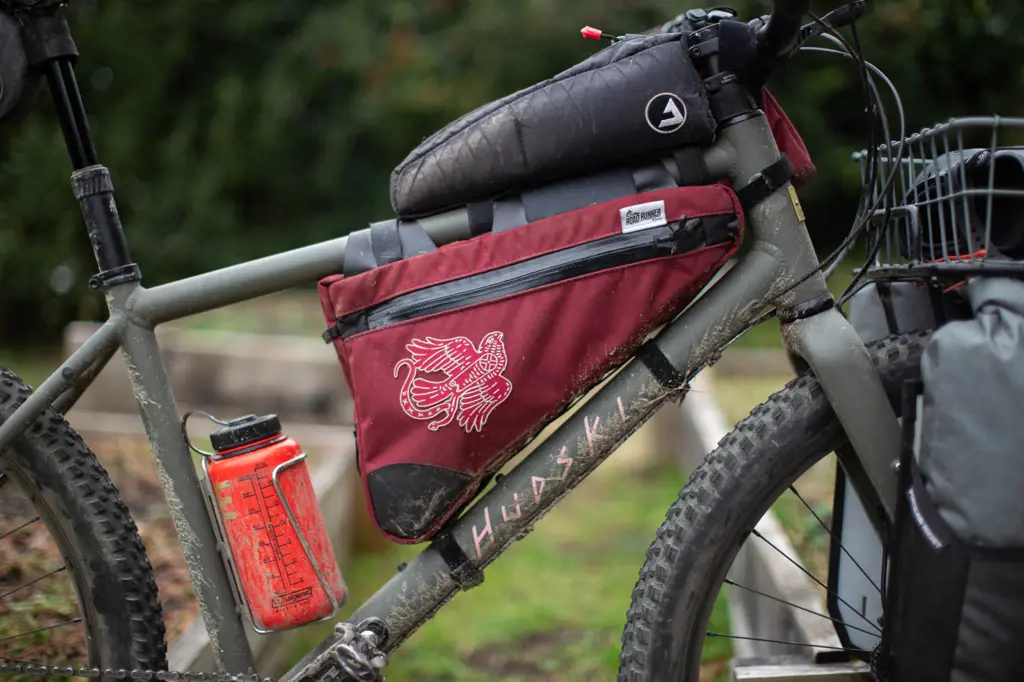
Frame bags are an essential component of any long-distance cycling journey. These bags are specially designed to attach to the frame of a bicycle, providing easy access to items while on the road. When planning for a long-distance cycling trip, it is important to pack the frame bag strategically, taking into account the specific items that are necessary for the journey. In this article, we will discuss some of the key items that should be included in a frame bag for long-distance cycling.
- Spare Tubes and Patch Kit: One of the most important items to pack in a frame bag is spare tubes and a patch kit. Punctures are a common occurrence while cycling, especially on long rides. Having spare tubes and a patch kit readily available can help you fix a flat tire quickly and get back on the road without delay.
- Pump or CO2 Inflator: Along with spare tubes and a patch kit, it is essential to carry a pump or CO2 inflator. These tools allow you to inflate the tire after fixing a flat. A mini pump or a compact CO2 inflator can easily fit in a frame bag and is lightweight, which makes it ideal for long-distance rides.
- Multi-tool: A multi-tool is a versatile tool that can help you with various mechanical issues that may arise during your journey. It usually includes a range of Allen keys, screwdrivers, and a chain tool. Packing a multi-tool in your frame bag ensures that you have the necessary tools to make minor adjustments or repairs to your bike.
- Nutrition: Long-distance cycling requires adequate fueling, and carrying nutrition in your frame bag is crucial. Pack energy gels, bars, or any other preferred snacks that are easy to consume on the go. Opt for lightweight and compact options to save space in your frame bag.
- Water: Staying hydrated is essential during a long-distance cycling journey. While most bikes have bottle cages, it can be helpful to carry an extra water bottle in your frame bag, especially in remote areas where water sources may be limited. Ensure your frame bag has an insulated sleeve to keep your water cool.
- Spare Parts: It is always a good idea to carry a few spare parts in your frame bag, such as brake pads, a spare derailleur hanger, and extra chain links. These spare parts can help you make emergency repairs in case of mechanical failures on the road.
- Phone and Cash: Don't forget to pack your phone and cash in your frame bag. Your phone can be a valuable tool for navigation, communication, and capturing memories during your journey. Having cash available can come in handy when you need to purchase food, supplies, or seek assistance.
- Extra Clothing: Depending on the weather conditions and the duration of your journey, it may be necessary to pack some extra clothing in your frame bag. Lightweight and compact items like a rain jacket, arm warmers, and a long-sleeve jersey can provide protection against varying weather conditions.
- Personal Items: Consider packing a few personal items in your frame bag, such as sunscreen, lip balm, and wet wipes. These small essentials can make a big difference in your comfort while on the road.
Before packing your frame bag, assess your journey's specific requirements. Weight distribution is important, so pack your heavier items in the frame bag rather than on the handlebars or in a backpack. Keep the items organized using small pouches or zip-lock bags to ensure easy access and prevent them from getting lost or damaged.
In conclusion, packing a frame bag for a long-distance cycling journey requires careful consideration of the essential items. Spare tubes, a patch kit, pump or CO2 inflator, multi-tool, nutrition, water, spare parts, phone and cash, extra clothing, and personal items are all important items to include. By packing strategically and minimizing weight, you can ensure a smooth and enjoyable journey.
Essential Items to Pack for Your London, Ireland, and Scotland Trip
You may want to see also

How do I determine the optimal weight distribution when packing my frame bag?
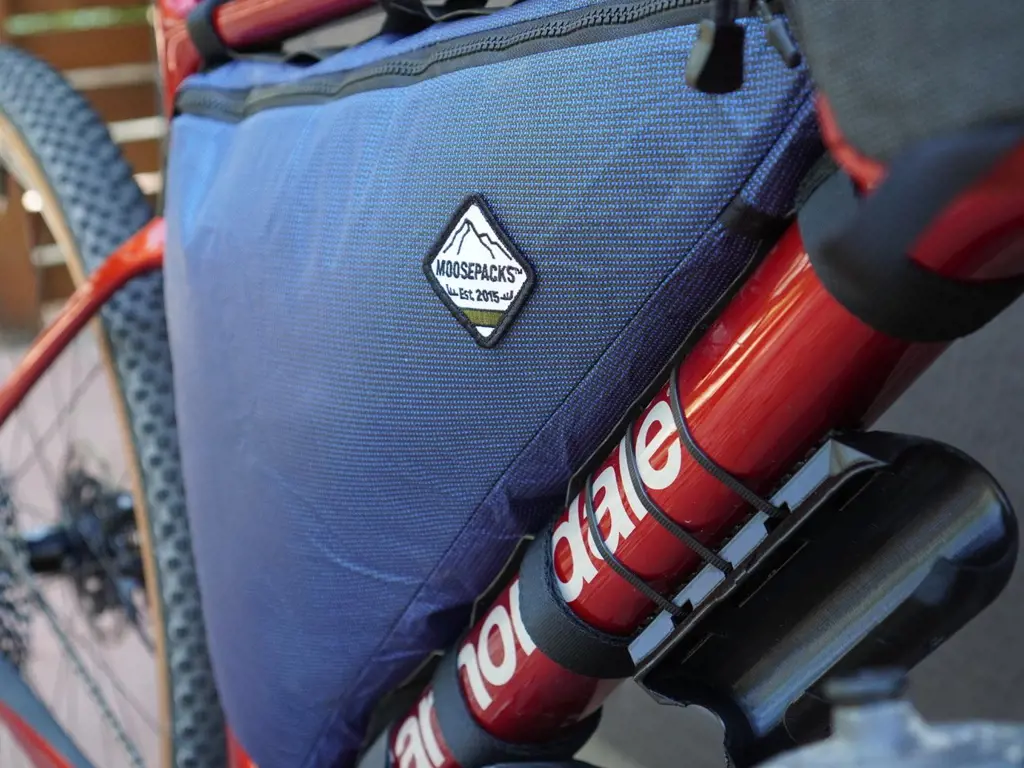
When it comes to packing your frame bag for an outdoor adventure, determining the optimal weight distribution is crucial for a smooth and comfortable ride. An improper weight distribution can result in poor handling, strain on your body, and an overall unpleasant experience. In this article, we'll explore how you can determine the optimal weight distribution for your frame bag, ensuring a balanced and enjoyable ride.
Step 1: Assess Your Frame Bag's Capacity
The first step in determining the optimal weight distribution is to assess the capacity of your frame bag. Each frame bag has a specific weight limit, so it's important to know how much weight your bag can comfortably handle. Overloading your frame bag can lead to discomfort and potential damage to both your bag and your bike.
Step 2: Categorize Your Gear
Next, categorize your gear into different groups based on weight and importance. Some common categories may include clothing, food, cooking equipment, tools, and personal items. This step will help you understand the overall weight distribution needed and ensure you don't forget any essential items.
Step 3: Prioritize Essential Items
Once you have categorized your gear, prioritize the essential items that you'll need easy access to during your ride. These items may include your phone, map, keys, and snacks. Placing these items in easily accessible pockets or compartments will allow you to retrieve them without unpacking your entire frame bag.
Step 4: Balance Weight Distribution
Now that you have categorized and prioritized your gear, it's time to distribute the weight evenly throughout your frame bag. Start by placing the heaviest items at the bottom and towards the center of the bag. This will help maintain stability and prevent your bike from feeling imbalanced. It's also a good idea to distribute weight evenly on both sides of the bag to minimize the potential for swaying or tilting.
Step 5: Consider Weight Distribution on the Bike
While focusing on weight distribution within the frame bag is important, it's also crucial to consider the weight distribution on your bike as a whole. Balance the weight between your frame bag, handlebar bag, saddlebag, and any other bags you may have attached to your bike. This will help maintain stability and ensure the bike handles well during your ride.
Step 6: Test and Adjust
Once you have packed your frame bag according to the above steps, it's time to test the weight distribution. Take your bike for a short ride to see how it feels. Pay attention to any imbalance, swaying, or strain on your body. If necessary, make small adjustments to the weight distribution until you find the optimal balance.
Examples:
Example 1:
If you're planning for a multi-day bikepacking trip, you may have heavier gear such as a tent, sleeping bag, and cooking equipment. In this case, it's important to pack these heavier items at the bottom and towards the front of your frame bag. This will lower your bike's center of gravity and keep it stable, especially when tackling uneven terrain.
Example 2:
For a shorter day trip, your frame bag may contain lighter items such as a jacket, snacks, and a water bottle. In this scenario, you can distribute the weight more evenly throughout the bag without worrying too much about the specific placement of each item. However, it's still a good practice to keep the heavier items towards the center for increased stability.
In conclusion, determining the optimal weight distribution when packing your frame bag is essential for a comfortable and enjoyable ride. By following the steps outlined in this article and considering the weight distribution on your bike as a whole, you can ensure a well-balanced load and improved handling. Remember to test and adjust as needed until you find the perfect balance that suits your riding style and preferences.
Essential Items to Include in a Wildland Firefighter Pack
You may want to see also

Are there any items that should be avoided when packing a frame bag?
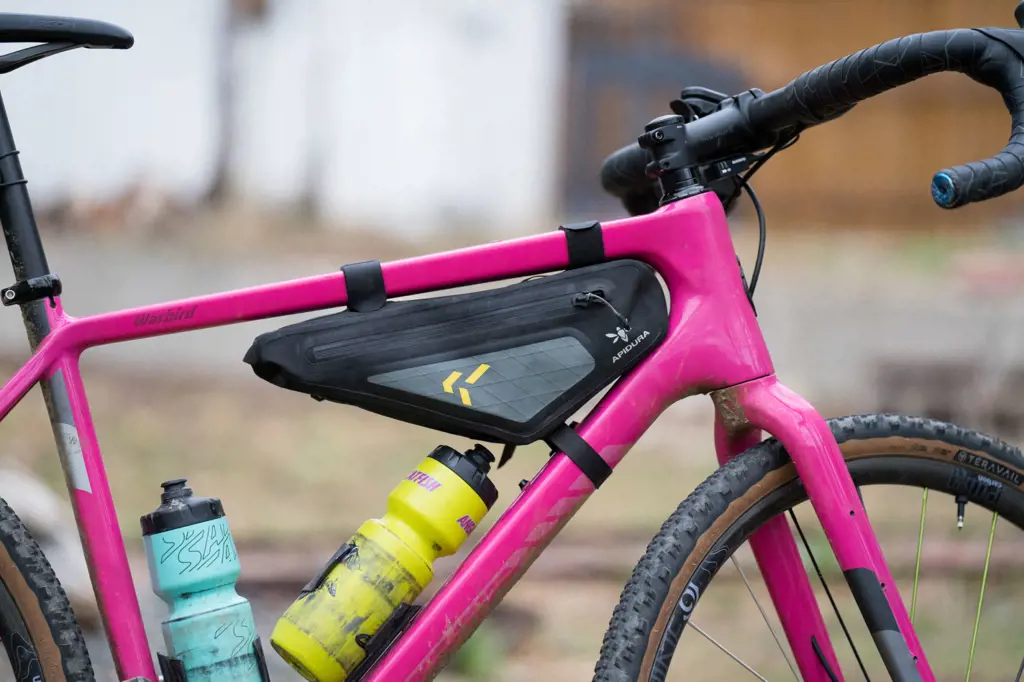
When packing a frame bag for your bike, there are certain items that you should avoid including. These items can either damage the bag or affect the balance and handling of your bike. Here are a few items that you should avoid packing in your frame bag:
- Liquids: It is best to avoid packing liquids in your frame bag, as they can leak or spill, damaging the bag and potentially causing a mess. This includes water bottles, oil bottles, and any other type of liquid. If you need to carry liquids, it is better to use a dedicated bottle cage or hydration pack.
- Fragile items: Fragile items like glass bottles, wine glasses, or delicate electronic devices should not be packed in a frame bag. The bag may not provide sufficient protection against impacts or vibrations, leading to potential damage. Instead, consider using a padded case or carrying fragile items separately.
- Sharp objects: Avoid packing sharp objects like knives, scissors, or multitools with exposed blades in your frame bag. These items can pose a risk of injury if they accidentally come in contact with your body or other items during the ride. Keep sharp objects secure in a separate tool pouch instead.
- Heavy items: While frame bags can handle some weight, it is important to avoid overloading them with heavy items. This can affect the balance and handling of your bike, making it more difficult to control. It is best to distribute heavy items across other panniers or bags on your bike for better weight distribution.
- Voluminous items: Avoid packing bulky or oversized items that may not fit properly in your frame bag. These items can create a bulge in the bag, affecting the aerodynamics and potentially interfering with your pedaling or steering. Choose items that can easily fit within the dimensions of your frame bag.
Remember, the contents of your frame bag should be lightweight, compact, and non-intrusive to ensure a smooth and comfortable ride. It is also advisable to pack items in a way that distributes weight evenly in your frame bag to maintain the stability and balance of your bike. Additionally, consider using protective cases or bags for items that require extra care or are susceptible to damage.
By following these guidelines, you can ensure that your frame bag is packed efficiently and safely, allowing you to enjoy your ride without any worries or inconveniences.
The Essential Items to Include in Your Carry-On for Your Mexico Trip
You may want to see also

Are there any tips or recommendations for organizing and packing a frame bag efficiently?
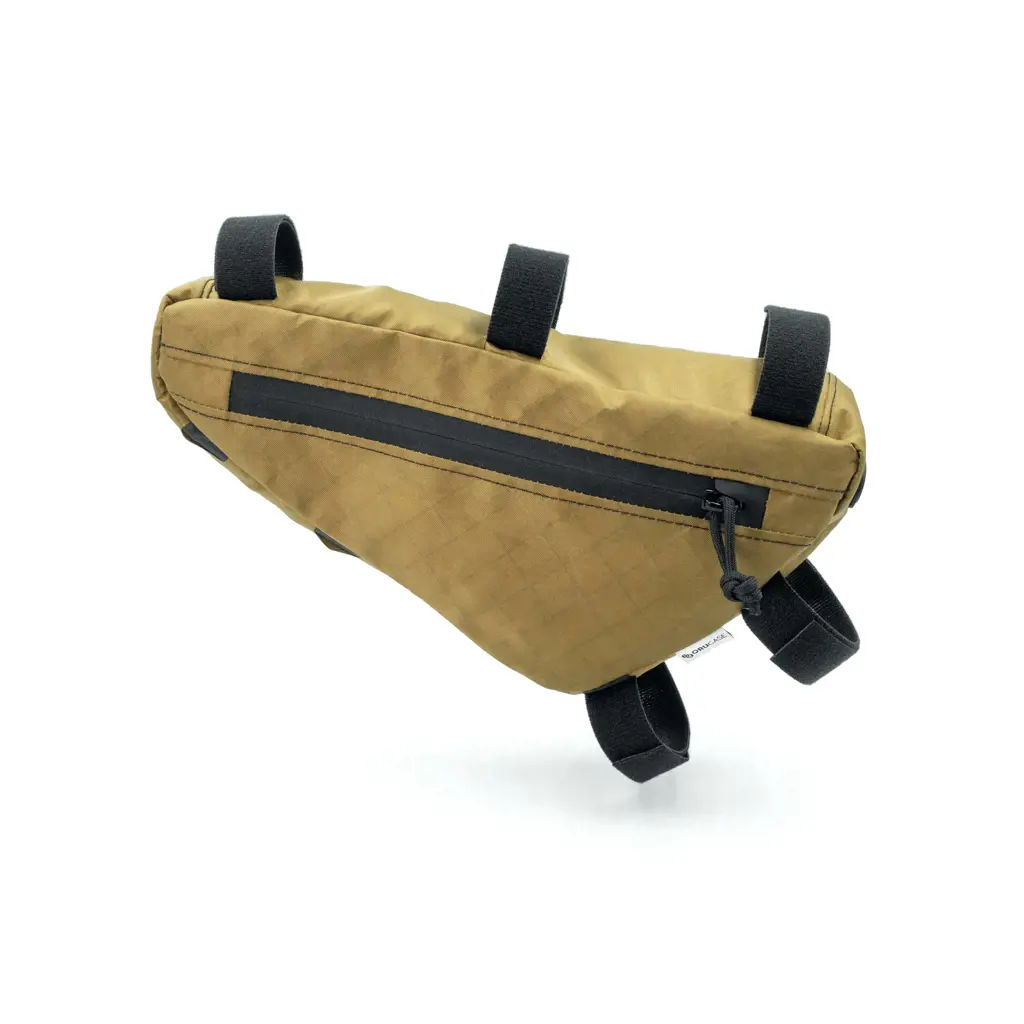
When it comes to organizing and packing a frame bag efficiently, there are several tips and recommendations that can help make the process easier and more streamlined. Whether you are embarking on a long bikepacking adventure or simply need to carry essential items on a shorter ride, having a well-organized and packed frame bag can make all the difference.
One of the first tips for organizing and packing a frame bag efficiently is to have a plan before you start. Take some time to think about what items you need to bring with you and how often you will need to access them. This will help you determine how to best allocate space in your frame bag and prioritize items based on importance and accessibility.
Once you have a plan in place, it's time to start packing. One common recommendation is to start by placing heavier items closer to the bike frame. This helps to distribute weight evenly and can improve the balance and handling of your bike. Some examples of heavier items that you may want to consider placing closer to the frame include tools, spare parts, and food.
Next, consider using packing cubes or organizers to keep smaller items organized and easily accessible. These can be especially useful for things like spare clothing, toiletries, and electronics. Packing cubes come in a variety of shapes and sizes, making it easy to find one that fits well within your frame bag and helps maximize space.
In addition to using packing cubes, it can also be helpful to use smaller bags or pouches within your frame bag to further compartmentalize your gear. This can help prevent items from shifting around and becoming disorganized during your ride. For example, you may want to use a separate bag for first aid supplies, another bag for snacks, and another bag for small tools.
When it comes to packing clothing, consider rolling items instead of folding them. This can help save space and make it easier to find specific items when you need them. Additionally, consider packing layers strategically so that you can easily access the items you need without having to unpack your entire frame bag.
Finally, don't forget to consider the weight distribution of your packed frame bag. Depending on the size and shape of your frame bag, it may be best to distribute weight evenly throughout the bag rather than concentrating it in one area. This can help improve the stability and balance of your bike and make for a more comfortable ride.
In conclusion, organizing and packing a frame bag efficiently is a key skill for any bikepacking adventure or long-distance ride. By having a plan in place, packing strategically, and using organizers or pouches, you can maximize space and easily access the items you need. Additionally, considering weight distribution and using packing techniques such as rolling clothing can help improve the balance and handling of your bike. With these tips and recommendations in mind, you can confidently prepare for your next cycling adventure.
Essential Items to Pack for a Memorable Croatia Holiday
You may want to see also
Frequently asked questions
When packing for a day ride, it's important to bring the essentials. This can include a spare inner tube, a multitool, tire levers, and a mini pump. In addition, you may want to pack some nutrition like energy bars or gels, as well as a small first aid kit for any minor injuries that may occur. It's also a good idea to bring a lightweight rain jacket or extra layer in case the weather changes.
Many frame bags do have a designated space for a water bottle, but it ultimately depends on the size and style of your frame bag. Some smaller frame bags may not have a specific compartment for a water bottle, but you can still fit a lightweight water bottle or hydration bladder inside the bag itself. Alternatively, you can also consider using a different type of bottle holder that attaches to your bike frame if you need easy access to water while riding.
In addition to the essentials, there are a few other items you may want to consider packing in your frame bag. This can include extra layers of clothing, such as arm warmers or leg warmers, in case the weather changes. You can also pack personal items like your phone, wallet, and keys in a small zippered pouch. Some riders also like to bring a small camera or GoPro to capture their adventures on the trail. Ultimately, the items you pack in your frame bag will depend on your personal preferences and the length of your ride.



